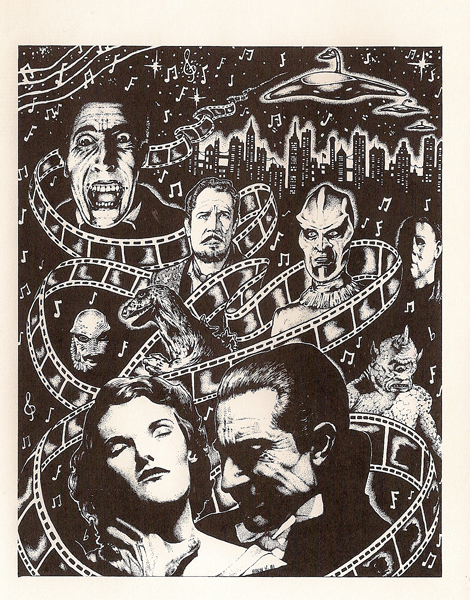Andrew Hollander: Scoring MY FRIEND DAHMER
Interview by Randall D. Larson

My Friend Dahmer
Jeffrey Dahmer murdered 17 men and boys in the American Midwest, becoming one of history’s most infamous serial killers. MY FRIEND DAHMER is the story before that story, portraying Dahmer as an awkward teenager struggling to make it through high school with a family life in ruins. His bizarre behavior at school attracts unexpected friends who find his behavior admirably obnoxious. One of those friends, John “Derf” Backderf, documented his experiences knowing young Dahmer in a 2012 critically acclaimed graphic novel, which has been written for the screen and directed in 2017 by Marc Meyers. Released this month on home video, MY FRIEND DAHMER is populated with a very good cast, as the film examines Jeffrey Dahmer without commentary, showing how he was treated in high school and at home while increasingly indulging in the kind of behavior that would eventually erupt into depravity and murder. Disney Channel’s Ross Lynch provides a striking portrayal of Jeff Dahmer, interpreting the young man’s mannerisms and quiet, shy nature with only momentary glimpses of the hidden rage that would become exhibited in the months to come, as witnessed with growing unease by those who knew him in those early years.
Composer Andrew Hollander
What is it like to create music for a film that follows the nuanced origin story of a serial killer? Enter composer Andrew Hollander (WAITRESS, SLEEPWALK WITH ME, SERIOUS MOONLIGHT) who was tasked with the unique opportunity to really get inside Dahmer’s head and soundtrack his young life. With a purposefully minimalist, understated score, Hollander skirts around the Dahmer bio to provide emphasis when needed for dramatic purposes but otherwise lets the storytelling immerse the viewer in time, place, and character; keeping them tautly focused on the psychological drama whose ending most of us recall all too well. Hollander describes his challenges and stylistic decisions in scoring MY FRIEND DAHMER in the following interview. -rdl
Q: What first interested you in film music and how did you get involved in the business?
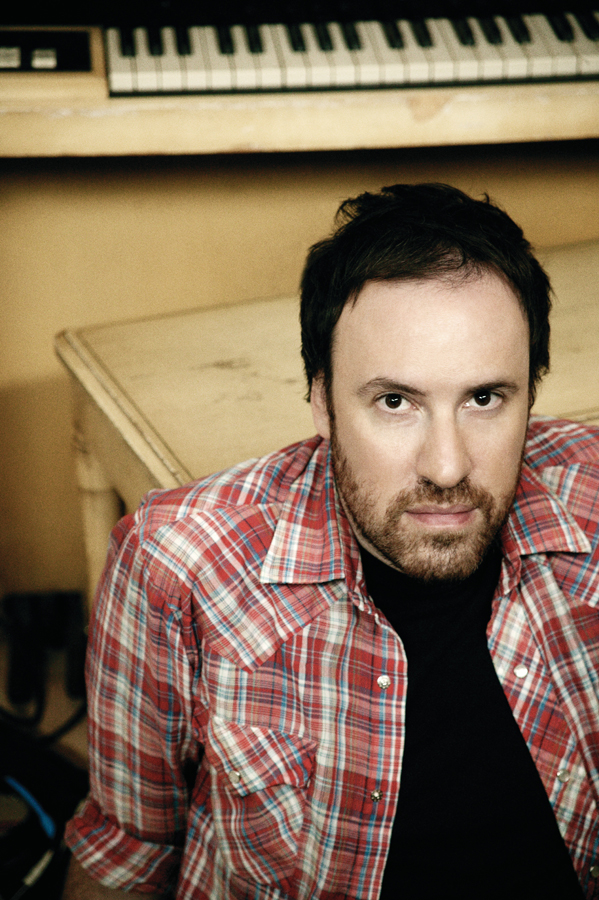
Andrew Hollander: I grew up really loving movies, and I had started playing music when I was 12 or 13. I started taking piano lessons and playing in a band with a bunch of friends of mine. I realized pretty quickly that I would really like to do both, working on movies and working in music. By the time I hit high school I knew that creating film music was the career that I wanted to have, so I went about find how I could learn about all kinds of different music. I played in rock bands, I studied classical piano and orchestration in college, and I studied with this amazing jazz musician named Yusef Lateef, and I felt like all of that gave me a good basis for how to go about learning the things I didn’t yet know – which I thought would come in handy for film music. Once I moved to New York a couple of years after college, I got hired on a real low budget indie film, which was my first experience really scoring anything to picture and I just loved it. I was pretty much hooked as soon as I did it; it just felt like the right thing for me.
Q: After that inauguration you went on to score some really interesting indie-type films, movies that seemed like they would have some great opportunities to score something in an almost subliminal or subtle way and yet could really allow you to focus on character and psychology. What did you learn from scoring those films and how did those experiences help you in scoring the psychological underpinnings of MY FRIEND DAHMER?
Andrew Hollander: Subtlety was something that always interested me about film scoring. Once you become aware of what music does in film you tend to begin focusing on it when you watch a movie. But there were also times when I would forget and I would just get completely absorbed into the film, and I’m thinking, man, that is really working! When I see films that really work like that – to this day it still reminds me of what an amazing role music can play in film. And at the same time I loved these melodic, beautiful scores, like Ennio Morricone’s CINEMA PARADISO, which I still listen to frequently. I felt like some of the things I have worked on have been very subtle, where it was never a matter of the music calling any kind of attention to itself, and then there were other films I worked on where there were certain themes that you really needed to remember. But I felt like whatever the approach was, the goal was the same which was just to pull you into whatever world was depicted in that film. So in the case of MY FRIEND DAHMER it was very subtle; in the case of a movie like WAITRESS, some elements are subtle, and others are a little more like “here’s a scene, and here’s this main theme for this character or this storyline.” But I really try not to go in with any pre-conceived ideas; I try to keep my mind as empty as possible when I’m starting and just see where it takes me. In the case of MY FRIEND DAHMER it was really clear to me after watching a rough cut and speaking with the director, that it was going to be very, very subtle, because he didn’t want it to feel like a horror film, because it’s not. It really is a coming-of-age story about someone who happened to turn into a serial killer. So that was its own unique challenge, finding a way to create just the right amount of tension without leading the audience along too much.
…One of the most helpful things in the process was always having that reminder that we need to stay where he was, and not jump ahead to where we know he ends up.
Q: It’s almost like you’re letting them forget what his future’s going to be so you can focus on his experiences as a teenager.
Andrew Hollander: Yes, that’s exactly right. One of the things the director said many times when we were working together was that we’re just in the moment where Jeffrey is at this moment, we’re not beyond where he is there, so we need to stay with him in his present moment. That was one of the most helpful things in the process – always having that reminder that we need to stay where he was, and not jump ahead to where we know he ends up.
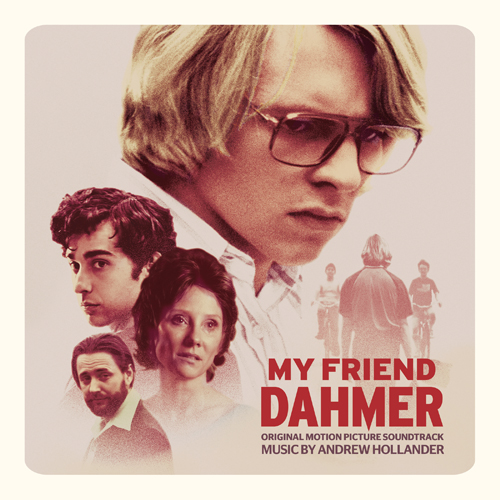
Q: How would you describe the film’s tone as it told the story and then how did you determine the kind of instrumentation and musical tone that needed to follow that?
Andrew Hollander: The film feels very real. It doesn’t feel like an exaggeration of the circumstances in any way. One of the things that the film does incredibly well is it makes you feel like you’re there – you’re in that time period, you’re with those kids in that high school, you’re very much a part of that world. There’s nothing that’s exaggerated about it, which creates an interesting challenge, musically, because of course the music score isn’t happening in someone’s daily existence, so what role would it play? And so I didn’t really want to use any instruments or sounds that were something specific. I didn’t want to be like, oh that’s obviously a piano, or that’s definitely a string instrument or whatever it may be, so I did a combination of some electronic elements along with some acoustic instruments that I manipulated to such a degree that you could no longer tell what it is. The only instrument that someone might clearly recognize is a very simple electric piano which is heard in a couple of the cues. I felt like we’re trying to get into this character’s head, some people in the audience know who he becomes, some of them don’t (which is what they found out when they did some initial test screenings), and so it was this fine line of how do we get into his head in a way that’s not familiar but enough to pull you into his world, and then whatever happened in that world is happening on screen. I didn’t feel the need to “tell” anyone anything; it was more pulling you into his head and conveying the feeling of what it might be like to be there.
Q: How did you work with the director as far as determining the style, where the music would be spotted. and how it would be used?
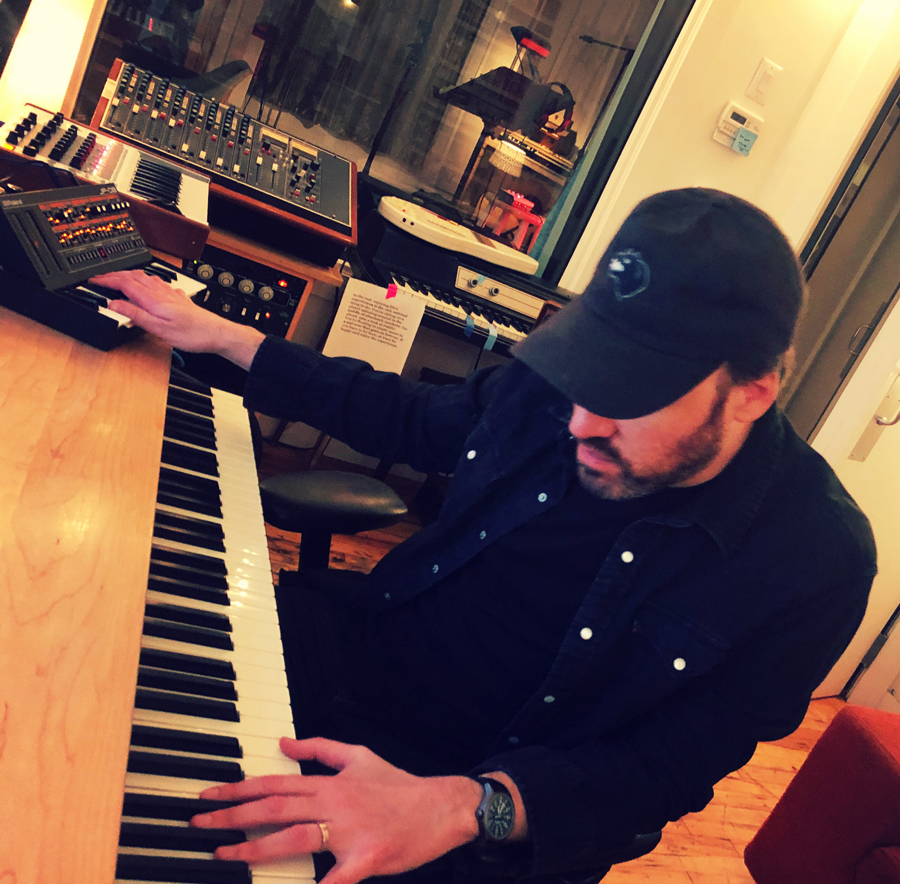
Andrew Hollander: When I first saw the rough cut they had temped in a bunch of music; none of it was anything that they were married to, but it showed where they likely felt music would be helpful. When I started working on it, it became apparent to me that we didn’t even need music in as many scenes as they had temped it into. The director and I talked about that and agreed that it felt better with a less-is-more sort of thing, but then the majority of places where there is music the director and editor had temped something there that I agreed felt right. So I just started composing some pieces, not specifically to any particular scene at first but just to get the tone of the film and of being pulled into Jeffrey Dahmer’s head a little bit. After I’d composed and recorded some initial sketches, the director came by with his editor Jamie [Kirkpatrick] and we just watched them and played around with different scenes to see where they could work. We agreed it felt like it was the right direction and the right sound, and after that I just went to work scoring the main scenes first – those were the opening sequence and then a scene later in the film where he’s in a shopping mall and putting on one last “spaz show” for his friends. Then there’s another scene where he’s watching the local doctor that he’s attracted to jog past him; that’s something you see several times in the film, but there’s one in particular that needed to be somewhat ominous; it’s scored and also has a lot of sound design elements mixed in. The intention there was very much to integrate score with sound design, so it wasn’t always clear what was what.
…the scenes that were most challenging were two of the scenes that were a little lighter in tone – because it was always a question of how light you can get while still staying in the world of this film – so we were really walking a fine line there.
The process was actually pretty quick on this film. When all is said and done, it was probably three or four weeks to get it done. Interestingly enough, the scenes that were most challenging were two of the scenes that were a little lighter in tone – because it was always a question of how light you can get while still staying in the world of this film – so we were really walking a fine line there. We probably had more discussion about what to do with those two scenes than any of the stuff that was darker or more subtle music.
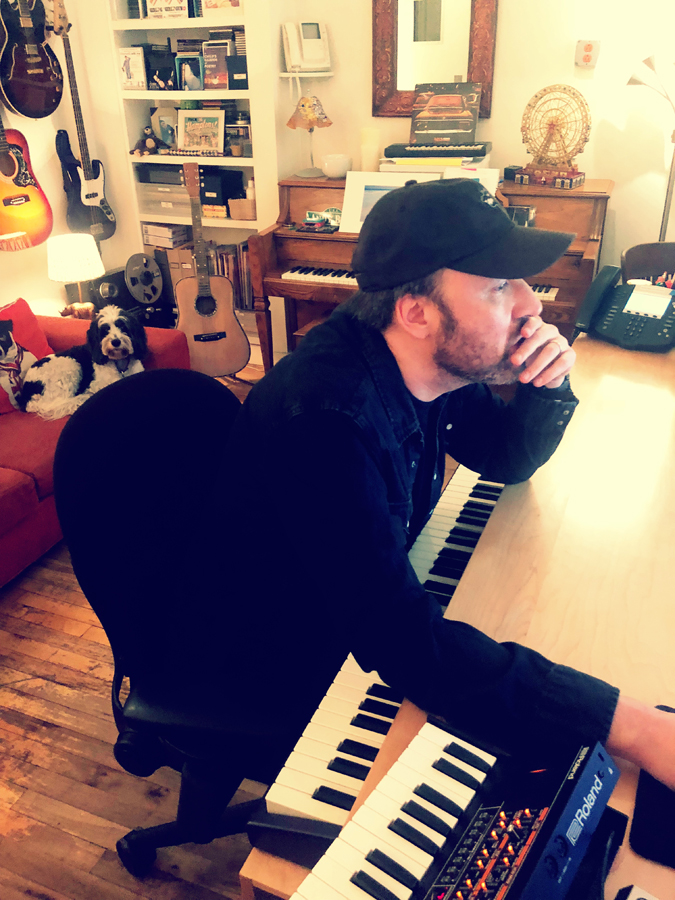
- Andrew Hollander working in his studio, while a friendly critic watches.
Q: To what extent did the director’s interpretation of the comic book provide you with the chance to create a psychological portrait of Jeffrey Dahmer at this point in his life?
Andrew Hollander: Marc Meyers, the director, stayed very true to the book, and since the book was written of course by a friend of Jeffrey Dahmer’s in high school, it’s such a firsthand account that, again, I didn’t want to get in the way of that. How their friendship plays out is pretty clear in the book, in the script, and on the screen, so a lot of music in those scenes would have been intrusive. So much of the film’s feeling real was already working, even going back to the rough cut, that I was trying to be very sensitive and thoughtful about how I approached the score. I just tried to pull the viewer in another layer in certain places, and to set a tone where subliminally you feel like there are a lot of other things happening just under the surface. One of the things that became clear as soon as I started working on the movie was that you really see how Jeffrey was trying to repress so many feelings, some horrible and terrifying, some probably more common to anyone going through any sort of tough time in high school. That just-under-the-surface unease felt worth tapping into, as opposed to something that was blatant and in-your-face. That was the thing, a lot of what Dahmer did in high school was not in anyone’s face; there were certainly some things he did that could have set off alarm bells for some people, but I think most of the people who saw him at school just thought he was just a weird kid and that was that. I didn’t want to push that in any other direction because that was the truth of it.
Q: What’s coming up next for you?
Andrew Hollander: There’s a documentary I’m scoring now called IT’S A HARD TRUTH AIN’T IT that I’m very excited about. It’s been interesting and enjoyable to actually dig into some projects that are a little bit darker in tone, and I wanted to do a little more of that – so it was funny that around the time I was thinking just that I get a call about MY FRIEND DAHMER! It is interesting how sometimes what you put into the universe comes back like that. It was a great experience and I feel myself very fortunate to have worked with the people I did on that movie.
Q: As you said at the beginning, your filmography certainly has shown a great bit of diversity in the type of films and musical opportunities you’ve had.
Andrew Hollander: Yeah. That’s one of the things I’ve always liked, even before I was actually doing film music. One of the things that especially seemed appealing about it was the idea that you could always do different things, so the more that I can keep that kind of a trajectory going the happier I will be.
Thanks to Molly McIsaac and Adrianna Perez of White Bear PR for facilitating this interview, and to Andrew Hollander for such a compelling conversation. -rdl
Watch the film’ trailer on youtube
For more information on the composer, see: http://www.andrewhollandermusic.com/
Listen to sample tracks from MY FRIEND DAHMER: http://www.andrewhollandermusic.com/work.php




